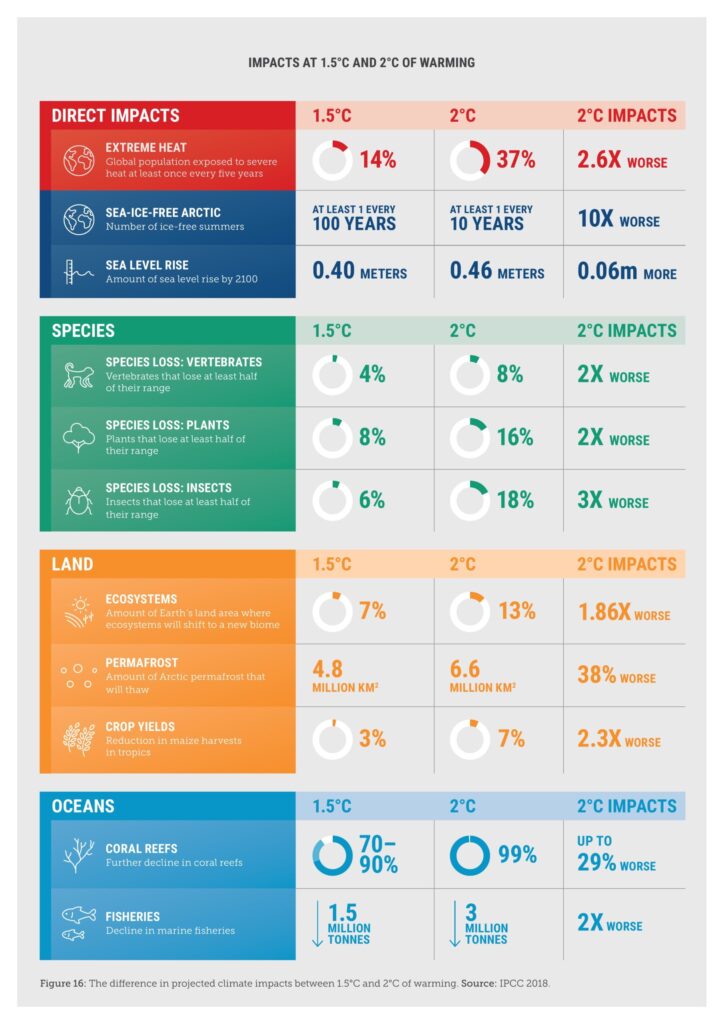During the UN Climate Change Conference (COP21) in Paris, France, back in December 2015, 196 countries or parties agreed to the Paris Agreement. This agreement aimed to restrict global warming to 1.5°C by the end of this century. However, according to Copernicus, the EU’s trusted source for climate information, at that time, a strong El Niño was at its peak, leading to global mean temperatures exceeding 1.5°C for a few days.
In early June 2023, global mean surface air temperatures reached record highs, pushing the global mean temperature beyond the 1.5°C limit. According to Copernicus data, the ongoing development of the current El Niño, which began in early June 2023, indicates that April 2024 marked the hottest April since temperature records began and represents the 11th consecutive month of record global temperatures. The global average temperature between May 2023 and April 2024 is 1.61°C above the pre-industrial average of 1850-1900.
Have we breached the Paris Agreement?
According to scientists, surpassing the 1.5°C figure for one year does not break the landmark Paris Agreement but brings it closer to breaching it in the long term. However, breaching 1.5°C every year for a decade or two would see far more significant impacts of warming, such as longer heatwaves, more intense storms and wildfires, saying there is still time to restrict global warming by slashing CO2 emissions dramatically (McGrath, 2023).
Based on scientific findings, exceeding the 1.5°C threshold for a single year does not violate the pivotal Paris Agreement but brings us closer to breaching it in the long run. However, consistently surpassing 1.5°C annually for a decade or more would lead to significantly more severe warming effects, including prolonged heatwaves, intensified storms, and wildfires. The experts emphasize that there is still an opportunity to mitigate global warming by substantially reducing CO2 emissions (McGrath, 2023).
With just 1.5°C of warming, the world is witnessing extreme events, including floods in UAE and Brazil, severe heatwaves and droughts in Asia, and wildfires in Canada (2024’s Climate Crisis, 2024).
Committed to climate change
According to NASA, our current level of emissions has already committed us to a certain degree of climate change. On 9 May 2013, the world hit a significant milestone by reaching 400 parts per million (ppm) of CO2 atmospheric concentration.
This level hasn’t been seen since the Pliocene era, three to five million years ago, and the Earth’s temperatures rose roughly 3 to 4 degrees Celsius. This resulted in sea levels being 4 to 40 meters higher than normal, the North and South poles being as much as 10°C warmer, and the Earth being hotter and wetter. NASA predicts that we will hit 450 ppm by 2040, at which point scientists estimate a warming of 2°C will occur. In 2023, NOAA’s data recorded the carbon dioxide (CO2) concentration in the atmosphere at 419.3 ppm.
What’s in a number?
Some experts believe that surpassing the 400pm threshold marks the beginning of the Anthropocene era, characterized by humans’ activities significantly impacting the planet. Others view this as a concerning march towards an unknown future, given the persistent nature of CO2. (Graphic: CArbon, 2013).
Difference between 1.5°C and 2°C of warming
The Climate Council released an infographic based on the 2018 IPCC report on what can happen with 1.5°C and 2°C warming.
The 2018 IPCC Special Report on Global Warming warned that breaching 1.5°C above pre-industrial levels will bring grave consequences. Every degree or fraction of a degree of warming avoided can significantly affect the number of people, species, and ecosystems saved or lost.
According to scientists, extreme changes become more significant for every degree or fraction of a degree of global warming. For example, heat waves would become more frequent and more severe.
At 1.5°C, we can expect that 14% of the population will be exposed to severe heat, but at 2°C, 37% of the population will be affected, making the impact 2.6 times worse.
Regarding the effects on the Arctic sea ice, when the temperature rises to 1.5°C, there will be a minimum of 1 ice-free summer every 100 years. However, at 2°C, an ice-free summer will occur at least once every ten years, marking a ten-fold increase in the severity of the impacts.
At 1.5°C, coral reefs are projected to experience a significant decline of 70-90%, but at 2°C, nearly 99% of all coral reefs will be destroyed. This represents a 29% increase in impacts with just a half-degree rise in temperature.
A Carbon Brief interactive report, “The impacts of climate change at 1.5C and beyond”, which analysed 70 research papers, also compare the impacts of a 1.5°C and 2°C temperature increase across a range of metrics, such as oceans, ice, temperature, rainfall, drought, storms and flooding, crops, nature, economy, and health.
Based on current projections, under a 1.5°C global warming scenario by 2100, sea levels are expected to increase by approximately 48 centimetres. However, if warming reaches 2°C, the rise could go as high as 56 centimetres. Although a difference of ten centimetres might appear small, the IPCC warns that this extra 10 cm could have significant repercussions, affecting an additional 10.4 million people through direct impact, coastal flooding, or saltwater intrusion damaging their crops.
Under 1.5°C global warming, we can expect a 16% rise in hot days, but under 2°C, this increases by 25% or 35 more days of scorching temperatures yearly. An additional 62 million people will be exposed to drought yearly if we reach 2°C, compared to 1.5°C.
Scientists are confident that we still have the opportunity to avoid the severe impacts on our health, wildlife, ecosystems, and environment, which would also affect the economy, food security, and overall quality of life.
The solution is to take immediate and urgent action to shift towards a low-emission energy, industry, transport, and agriculture system while swiftly transitioning to renewable energy sources.
Source:
Tracking breaches of the 1.5⁰C global warming. (2023, June 15). Copernicus. Retrieved from https://climate.copernicus.eu/tracking-breaches-150c-global-warming-threshold
Copernicus: Global temperature record streak continues – April 2024 was the hottest on record. (2024, May 7). Copernicus. Retrieved from https://climate.copernicus.eu/copernicus-global-temperature-record-streak-continues-april-2024-was-hottest-record
Graphic: Carbon dioxide hits new high. (2013, July 16). NASA. Retrieved from https://science.nasa.gov/resource/graphic-carbon-dioxide-hits-new-high/
Lindsey, R. & Dlugokencky, E. (2024 April 9). Climate Change: Atmospheric Carbon Dioxide. NOAA. Retrieved from https://www.climate.gov/news-features/understanding-climate/climate-change-atmospheric-carbon-dioxide
Impacts at 1.5 and 2 degrees of warming. (2023, April 15). Climate Council. Retrieved from https://www.climatecouncil.org.au/resources/impacts-degrees-warming/
The impacts of climate change at 1.5C, 2C and beyond. (2018, October 4). Carbon Brief. Retrieved from https://interactive.carbonbrief.org/impacts-climate-change-one-point-five-degrees-two-degrees




Leave a Reply